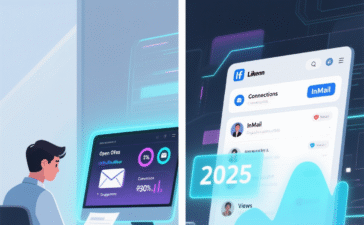The Future of Data Processing: Exploring the Power of Edge Computing
As the digital world continues to expand, the need for efficient and scalable data processing solutions becomes increasingly vital. Enter edge computing—a transformative technology that is revolutionizing how data is processed, analyzed, and utilized in our connected ecosystems. This article delves into what edge computing is, its benefits, and its applications across various industries, providing a comprehensive overview of why this technology is pivotal for the future.
What is Edge Computing?
Edge computing refers to the practice of processing data closer to its source rather than sending it to a centralized data center or cloud for processing. This approach involves utilizing edge devices—small, low-power computing units located near the data source—to handle data processing tasks locally. By doing so, edge computing reduces the need for extensive data transmission over networks and allows for real-time processing, which is crucial for many modern applications.
How Edge Computing Works:
- Local Data Processing: Data generated by IoT devices or other sources is processed by edge devices at or near the source, significantly reducing the latency associated with sending data to distant servers.
- Communication with Cloud: Processed data can be sent to the cloud for further analysis or storage if needed, but the immediate processing happens at the edge.
- Hybrid Computing Environment: Edge computing complements cloud computing by extending its capabilities to devices closer to the data source, creating a hybrid system that balances local processing with cloud resources.
Why Edge Computing is Important
The growing volume of data generated by connected devices—such as sensors, cameras, and smart appliances—makes it impractical to rely solely on centralized cloud computing for data processing. Edge computing addresses several key challenges:
- Latency Reduction: By processing data locally, edge computing minimizes the time it takes to analyze and act on data. This is crucial for applications requiring real-time responses, such as autonomous vehicles and industrial automation.
- Enhanced Security: Local data processing reduces the risk of data breaches and cyber attacks by keeping sensitive information closer to the source. This localized approach limits the exposure of data as it travels over networks.
- Bandwidth and Cost Savings: Edge computing alleviates network congestion by reducing the volume of data transmitted to centralized servers. This can lead to cost savings on bandwidth and reduce the strain on network infrastructure.
Benefits of Edge Computing
Edge computing offers several advantages that make it an appealing option for modern data processing needs:
- Latency Reduction: Real-time data processing at the edge allows for immediate decision-making, which is critical for applications such as autonomous driving and industrial control systems.
- Enhanced Security: By processing and storing sensitive data locally, edge computing reduces the risk of data breaches and improves overall data security.
- Cost Savings on Bandwidth: Reducing the amount of data sent to centralized servers helps lower bandwidth costs and reduces network congestion.
- Energy Efficiency: Localized data processing can lead to lower energy consumption, as it minimizes the need for long-distance data transfers.
- Improved Resource Utilization: Edge computing enables more efficient use of computing resources by distributing processing tasks across edge devices, reducing the reliance on centralized cloud infrastructure.
Edge Computing and Multi-Access Edge Computing (MEC)
Multi-access edge computing (MEC) is a specific implementation of edge computing designed for wireless communication networks, such as 4G and 5G. MEC focuses on deploying edge computing capabilities at network access points or base stations, enhancing network performance and delivering low-latency services. MEC enables various edge-based services and applications, including:
- Real-Time Video Analytics: For surveillance and monitoring in smart cities.
- Low-Latency Analytics: Supporting applications requiring minimal delay, such as augmented reality (AR) and virtual reality (VR).
- Intelligent Autonomous Logistics: Optimizing supply chain management with real-time data processing.
Edge Computing Applications Across Industries
Edge computing is reshaping various industries by enabling faster, more efficient data processing and decision-making. Here are some key industry applications:
- Automotive Industry:
- Real-Time Vehicle Monitoring: Edge computing allows for real-time analysis of vehicle data, enabling proactive maintenance and improved performance.
- Autonomous Driving: Edge devices process data from sensors in real-time, enabling autonomous vehicles to make split-second decisions.
- Intelligent Traffic Management: Edge computing analyzes traffic patterns and optimizes routes, improving overall traffic flow and reducing travel times.
- Healthcare Industry:
- Remote Patient Monitoring: Edge computing supports real-time monitoring of patients’ health data, allowing for timely interventions and better patient care.
- Telemedicine and Telehealth: Enhanced by edge computing, telemedicine services can provide remote care with minimal latency and faster analysis of medical data.
- Emergency Response Systems: Real-time data processing from wearable devices enables quicker detection of emergencies and faster response times.
- Manufacturing Industry:
- Predictive Maintenance: Edge computing enables real-time monitoring and analysis of machinery, predicting potential failures and minimizing downtime.
- Quality Control and Inspection: Real-time analysis of production data ensures consistent product quality and identifies defects promptly.
- Intralogistics Optimization: Edge devices optimize inventory management and material flow, enhancing order fulfillment and supply chain responsiveness.
Edge Computing and Integration Platforms
Integrating edge computing with integration platforms enhances data management and analysis by:
- Streamlined Data Management: Integration platforms facilitate seamless communication between edge devices and centralized systems, enabling efficient data flows and real-time insights.
- Scalability and Flexibility: Edge computing’s distributed architecture, combined with integration platforms, allows organizations to scale operations and adapt quickly to changing requirements.
- Efficient Data Integration: Integration platforms manage data integration tasks, ensuring consistency and enabling comprehensive analysis across edge and cloud environments.
- Enhanced Monitoring: Integration platforms ensure effective monitoring of edge devices and data flows, maintaining data consistency and enabling near real-time sharing of insights.
Security and Sustainability Considerations
Security: Implementing edge computing requires robust security measures to protect edge devices and networks. This includes encryption, access controls, and regular updates. A well-defined incident response plan is also crucial for mitigating security risks.
Sustainability: Edge computing contributes to sustainability by reducing energy consumption and optimizing resource utilization. Localized data processing minimizes the need for data transmission, leading to lower carbon emissions and improved energy efficiency.

Conclusion
Edge computing represents a significant advancement in data processing technology, offering numerous benefits such as reduced latency, enhanced security, and cost savings. By bringing processing power closer to data sources, edge computing enables real-time decision-making and supports a wide range of applications across various industries. As technology continues to evolve, edge computing will play an increasingly critical role in shaping the future of digital ecosystems, driving innovation, and improving operational efficiency.
For organizations looking to leverage edge computing, integrating it with platforms and ensuring robust security measures are essential steps. By embracing edge computing, businesses can optimize their data processing capabilities, enhance sustainability, and stay ahead in an increasingly connected world.




